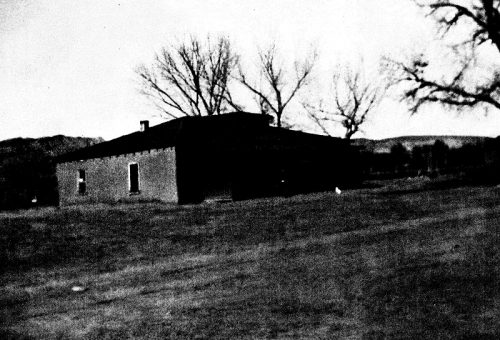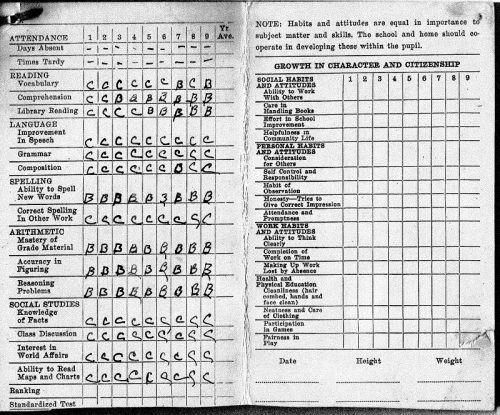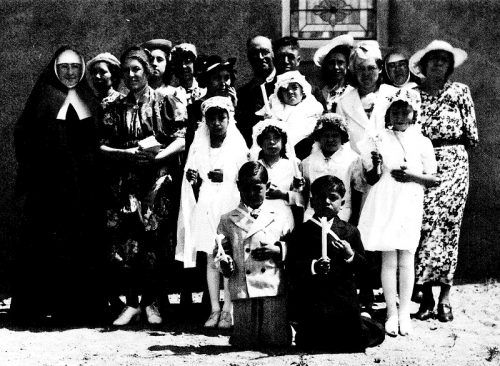 San Ysidro Stories: Enrique (Henry) Claudio Emilio Perea
San Ysidro Stories: Enrique (Henry) Claudio Emilio Perea
Source: Conversation on February 22, 2017, with Jean Ramsey, Diana Sellers and Judith Isaacs
Enrique Claudio Emilio Perea – or Henry as he is called – was born at home, with the assistance of una comadrona (a midwife) in San Ysidro in 1932. He was one of 12 children. His father, Emiliano Perea, was born in 1895 and came with his family to San Ysidro in the early 1900s; they moved from Bernalillo and then to San Luis before coming here.
“My grandfather, Juan Perea, died from injuries in a horse and wagon accident, and my grandmother, Josephita Perea, moved to San Ysidro and bought property, presently just south of Pricilla Christalaw’s home to the Powell holdings, and from hill-to-hill (east-west) along Highway 4. It was around 160 acres. She and my dad and uncles operated a freight company, using Model T trucks, which ran from Bernalillo to Cuba. Eventually, she divided the land into parcels for her four sons. They were all farmers. We all had big gardens and a few cattle, which was enough to feed us.”
Henry said he and his friends liked to play Ante Over when they were kids. “We would throw a tennis ball over the house. Also hide and seek. We didn’t have radio or TV.”
He said he wasn’t a very good student, but he had excellent attendance. He showed an award he had received in sixth grade and explained how he earned it. “The teachers added the scores for each month, and the one with the highest score got a certificate. Then, at the end of the year, the one with the most certificates got the BIG certificate. Henry earned that because he got six out of nine certificates. “You know what, though? The girl that got the second most certificates got passed on to 8th grade. I only got passed on to 7th.”

One memory from grade school was not pleasant. “The teacher for the 3rd, 4th and 5th grades hit me over the head with a book every single day. Looking back, I can say there was something wrong with her. Another time that teacher had gone riding with a man, and a girl in my class saw her and told people she saw the teacher on a date. The teacher found out the girl had told and hit her over the head with a book all day long one day. We went home for lunch, came back, and she started hitting her again. We didn’t have any lessons that day. Honest to God truth!” He added, “Ohhh, no! We didn’t dare tell our parents.” The school had 10-12 students taught by one teacher. He remembers that one of his teachers was Mrs. Mahboub, and that Bertha Caldwell was the bus driver to high school in Bernalillo.
He explained why he was 19 years old when he graduated from high school. “We had a pre-first grade for those who couldn’t speak English. That’s so we could keep up. The grade school was the building that is the Village Office now.” He went to the public high school in Bernalillo for high school for two years, which became Our Lady of Sorrows, where he graduated. The law changed so that the bus couldn’t drop students at the parochial school, so for two years he boarded in Bernalillo. “The nuns had some extra rooms, so me and two boys from Peña Blanca stayed there. I would hitchhike home on Friday night or Saturday morning and hitchhike back on Sunday night or Monday.”

Henry and his three brothers joined the service. The older boys served overseas in World War II, and Henry and his younger brother served in the Korean War. His father had served in World War I. After Henry’ finished his military service, he lived in California where he met his wife, Maria Patricia Perea (Pat). Pat’s family lived in Albuquerque in the Los Duranes neighborhood near Old Town. “She came out to help her sister who was due to have a baby. Then she went back, then came to California again, and we got engaged. She gave me no choice about getting married. She told me, ‘If we don’t get married, I will give you back your ring.’ We had to go to Juarez because she wasn’t old enough to get married here. Then, once we were married, the church would marry us here. So, I got married twice in one week – the second in San Felipe Church in Albuquerque.” His wife was 15 years old. He said, “Her sister asked me to take her to a concert when we first met, and I asked how old she was, and she said 18!” They were married 53 years.
Henry was a supply clerk in the Army and then worked as a barber in California. (His red-and-white striped barber pole sits in his living room today.) In 1972, Henry and his wife returned to San Ysidro and bought a liquor store/bar called La Mesa Blanca, which he operated until 1997. That building remains on Hwy. 550. He also owned and ran Henry’s Backhoe and Pumping Service, which provided earth-moving and septic service for the area. He served as trustee and mayor pro tem of San Ysidro for 22 years, and was mayor for one term in 1998.
Henry remembers that he ran cattle across what is now Hwy. 550 up against White Mesa. He said up until the 1960s, every resident could graze three cows on the common land. In the early 2000s, the Perea Wetlands Area at Rio Salado bridge was developed by the BLM in part of that land. He and his wife had four children, one of whom died in infancy. His two daughters live nearby – one in San Ysidro and one in Ponderosa– and his son lives in Albuquerque.
The San Ysidro land grant was once much larger than it is today. He said, “It covered from the Zia boundary to near Red Mesa (east-west) and from Jemez Pueblo to White Mesa (north-south). Henry explained what happened: “A law firm owned by a man named Donnell petitioned the government in Spain on behalf of San Ysidro and got what was called a patent. Then he turned around and filed against the residents for back taxes. He got the land and sold it to the U.S. government. Then they gave some of the land to Zia Pueblo and some to BLM.” A sore point with him and others is that the San Ysidro cemetery was across the river and that became Zia land. Now the gate is locked and the cemetery is neglected. Because of that, he has elected to be buried in Albuquerque with other family members and recently exhumed a sister’s body and had her reburied in Bernalillo.









